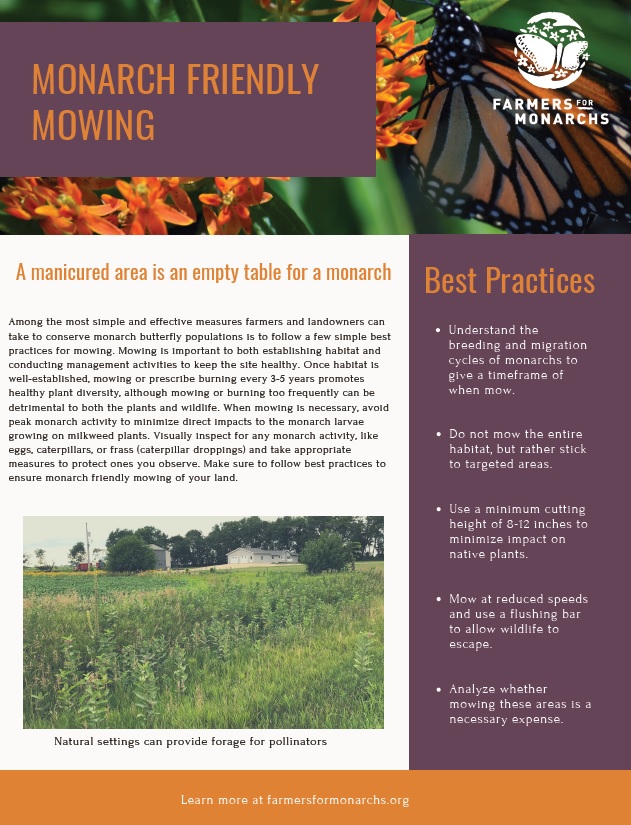Where are the monarchs now?
The monarchs are well into their northern migration and can be found throughout the Midwest. Monarchs have been sighted as far north as Indiana. Follow their migration at Journey North.
A campaign that started in England urging landowners to avoid mowing their lawn is steadily gaining momentum in the United States. The campaign is called No Mow May. It asks landowners to forego mowing their lawn during the month of May to let flowers in lawns bloom, providing a feast of nectar for pollinators. During this early spring time period, there are typically not as many blooming resources available across our natural landscapes. No Mow May is a conservation initiative first popularized by Plantlife, a British conservation charity working nationally and internationally to save threatened wildflowers, plants and fungi.
No Mow May is spreading in the United States, according to a 2022 National Public Radio story highlighting an effort in Appleton, Wisconsin. The story reports that more than 30 cities in the United States, mostly in the Midwest, have adopted the No Mow May initiative.
By and large, there's just been incredible support for the effort, a lot of buy-in, a lot of participation,” said Jake Woodford, mayor of Appleton, in an interview with NPR.
- Analyze whether the areas you mow including your roadsides or other margins or vacant properties are a necessary expense of time and equipment. Even if they seem small, those are important areas in improving pollinator resources and habitat connectivity across the agricultural landscape. Mowed lawns, roadsides and pest-controlled crops provide very few resources to pollinators.
- During this time period anything that is blooming has positive nutritional value for pollinators. Flowers of any kind are sustaining populations of beneficial insects.
- If you are maintenance-mowing to control invasives or problem species, limit mowing to only targeted areas to preserve milkweeds and ensure some areas are left for beneficial insects.
- Understanding the breeding and migration cycles of monarchs can help inform when mowing might have the least impact on resident monarchs. The Monarch Joint Venture provides a handout with more information on recommended timing by region to minimize unintended harm to monarchs
- Find new places on your farm for monarchs, other pollinators, and wildlife to thrive by converting idle areas to prairie or pollinator habitat. This can be done by simply not mowing those areas.
May is right around the corner, if possible, take a break and avoid mowing your land during the month to enjoy the flowering plants and provide nutritious forage to pollinators. These flowering plants fuel pollinators, whether they are monarchs, hungry upon arrival during their spring migration northward, or bees seeking pollen and nectar to raise their brood. And by adopting sensible mowing practices, you can help sustain healthy ecosystems that are beautiful, support pollinators and other wildlife, and provide additional benefits for water and soil health.

